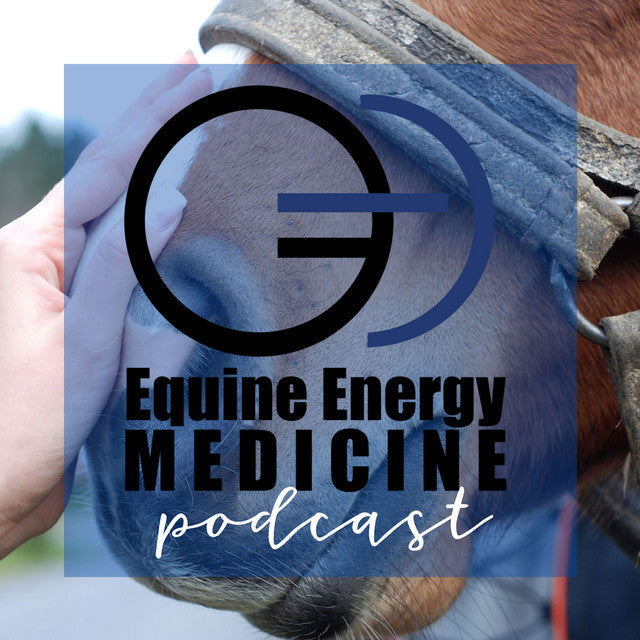
As winter approaches, it’s time to think about rugs for your horse. Picking the right rug can be a tricky decision for new and experienced horse owners alike. If you find yourself constantly checking the weather app on your phone or asking other owners which rugs they are using, then this guide will help. We’ll explore the factors that influence your choice and the different types of winter rugs, including a handy tool to keep them dry. Let's make sure your horse stays warm and dry all winter long.
What to Consider When Choosing a Winter Rug for Your Horse
To Rug or Not to Rug?
One of the main problems horse owners face is whether to rug or not. The decision hinges on several factors, the most critical being the weather.
If you are feeling a bit chilly it doesn’t necessarily mean your horse is feeling the cold too. Horses have a wider thermoneutral zone than humans. This is a range of temperatures where no energy is required to increase or decrease their body temperature. For humans, this is between 20°C and 30°C but in horses the range is much larger from 0°C to 25°C.
Here’s a temperature guide to give you a starting point:
-
Mild Weather (above 10°C): In relatively mild conditions, your horse may not need a rug as their natural coat should suffice. However, keep an eye on the wind and rain, as these factors can still make your horse feel cold.
-
Cool Weather (5°C-10°C): When it's cooler but not freezing, a lightweight rug may be necessary, depending on your horse's individual needs.
-
Cold Weather (0°C- 5°C): In colder temperatures, it's generally advisable to rug your horse. A medium-weight or heavyweight turnout rug can provide the necessary warmth.
- Freezing Weather (below 0°C): For freezing conditions, a heavyweight turnout rug is usually your best choice to ensure your horse stays snug.
Age, Type and Condition
The age, type and condition of your horse play a significant role in determining the weight of the rug they need. Older or underweight horses are less capable of regulating their body temperature and may require heavier rugs to keep their condition.
The type of horse can also influence rug choice. Native breeds, such as Shetlands or Welsh ponies, are typically hardier with a thicker winter coat. They are less likely to need as heavy a rug as a Thoroughbred with a finer coat, or may not even need a rug at all.
Clipping
Clipping is a useful way to prevent your horse sweating and becoming chilled after exercise. However, clipping does remove the natural winter coat so you will need to replace this with a rug. Horses who are fully clipped will need a thicker rug to stay warm and comfortable compared to a horse with a more conservative clip, like a bib or trace clip.
Different Rug Weights
Rugs are generally categorised as lightweight, medium-weight, or heavyweight. Lightweight rugs have little or no insulated fill, so are ideal for hardier horses or in mild conditions. Medium-weight rugs offer more warmth so are suited to cooler weather. In very cold conditions, a heavyweight rug will provide the most insulation.
You may need rugs of different weights to suit changing conditions throughout the winter.

The key takeaway here is to consider the individual needs of your horse. Not all horses are the same and tailoring your rug choice to their specific circumstances is essential for their wellbeing.
Types of Winter Rugs for Your Horse
Now that we've covered the factors that influence your choice to rug your horse, let's explore the different types of winter rugs available:
Turnout Rugs
Turnout rugs are designed to withstand the elements. They are waterproof and have a durable outer shell to protect your horse from rain, snow and wind. The outer is measured in denier and a higher number means the rug fabric is stronger – particularly useful if your horse is prone to destroying rugs!
Stable Rugs
Stable rugs are designed for indoor use. They provide warmth and comfort for your horse while in the stable. They are not waterproof but are excellent for keeping your horse cosy.
Liners
Liners are a versatile option that can be used in conjunction with turnout and stable rugs. They allow you to adjust the level of insulation your horse receives without the need for multiple rugs. Liners are particularly useful for managing your horse's comfort in fluctuating weather conditions.
Cooler Rug
Cooler rugs are ideal for after exercise or bathing. They wick moisture away from your horse's body, helping them dry quickly without becoming chilled. These rugs are a handy addition to your horse's winter wardrobe and can also be used when travelling.
Selecting the Right Size and Fit
Getting the right size and fit for your horse's rug is crucial to prevent discomfort. Take the time to measure your horse accurately, using the rug measurement guide from the rug brand to select the right size.
The cut of rugs can be different between brands and ranges, influencing the overall fit. Shoulder gussets offer more freedom of movement and are often suited to those with a broader chest. The fastenings at the front of the rug can change the fit too. For greater adjustment, look for straps with buckles. T-bar style fastenings can suit finer built horses but can’t be adjusted. Trigger clips are a quick way to secure the front of the rug but must be fastened facing inwards to avoid them becoming caught on anything. Getting the right style and size will minimise the risk of any rubbing.
Maintaining Your Horse's Winter Rug

Keeping your horse's rug clean and in good condition will help to increase its longevity. Regularly inspect the rug for any damage and wash it at the end of the season. Most winter rugs will not fit in your washing machine at home. Plus, it can be difficult to convince anyone you live with to let you put a muddy, hairy rug in the same machine you wash your clothes in!
The easiest option is to take your rug to a professional equine rug cleaner. If you prefer to tackle it yourself, first brush off the dirt and hair. Then, use a gentle hose and non-biological detergent so as not to irritate your horse’s skin. Avoid using a power washer as this can damage the waterproofing.
Once the rug is clean, it’s time to dry it. This can feel like an impossible task in the winter so the Paddock Blade Horse Rug Dryer can be a helpful tool.
Not only does it speed up drying rugs after washing them but on a daily basis. There’s nothing worse than hanging up a wet rug when bringing your horse in only to discover it’s still cold and wet when you need to put it back on in the morning! The rug dryer means you never have to handle damp, mouldy rugs again and the all-in-one design also means you can also dry saddlecloths, boots, bandages or even warm up your own jacket before heading for a winter ride.
Some turnout rugs come with a waterproof guarantee. After this time, you may need to get it reproofed. This can be taken care of by the professional washing your rug, or you can use a spray-on waterproofing product once the rug is clean.
Picking the right winter rug for your horse is a decision that requires careful consideration. Whether you're dealing with fluctuating temperatures, or selecting from various weights and types of rugs, it's all about ensuring your horse stays warm and comfortable throughout the winter season.
Remember that each horse is unique, so tailor your choices to their specific needs and don't forget the importance of maintaining your horse's rugs to extend their lifespan.
Written by Jennifer Welsh
















